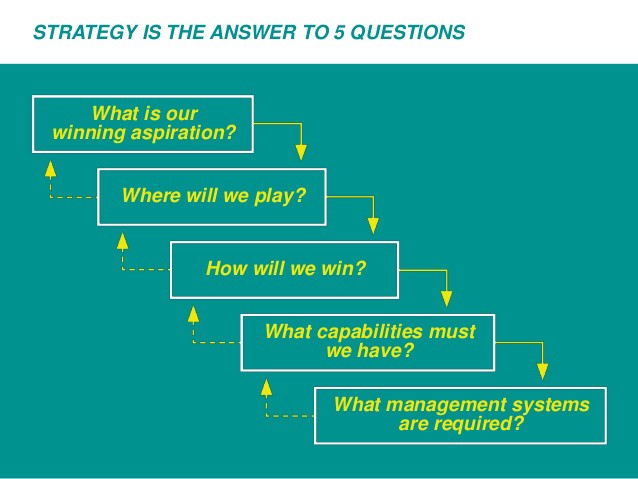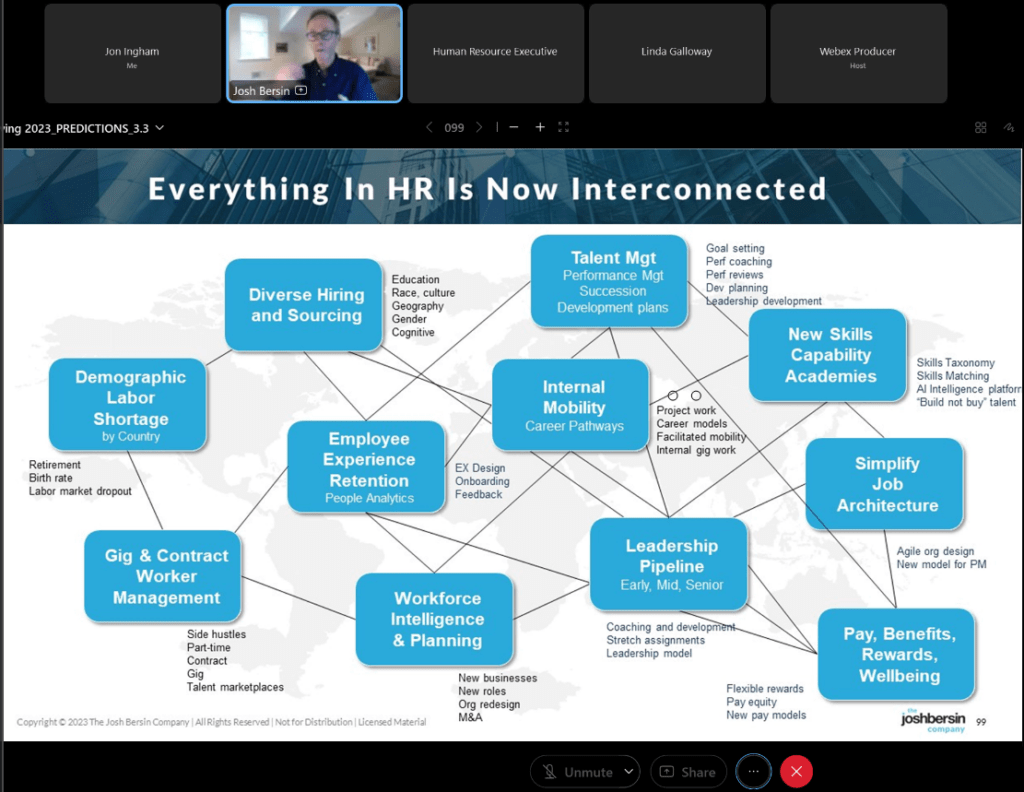Roger Martin: New Way to Think – book review

I’m currently in Montreal, Canada, after delivering the keynote at the HR Tech conference here. It therefore seems appropriate to be reading a new book by Canada’s leading management academic (if now resident in Florida), Roger Martin.
The book is ‘A New Way to Think’ – something which I strongly believe is needed – but actually most of the book isn’t that new, being based on Martin’s many HBR articles written over the years. I wouldn’t let that put you off – there are some real gems in here.
.
We Heart Models
The book’s key theme, connecting all the different articles / chapters is that we need new models or frameworks, ie general practices, theories or ways of thinking. You may already know that I’m a big fan of models, and will have heard me use at least a couple in any presentation you’ve seen me give, including today in Montreal.
I support Martin’s take that models are powerful because we use them to organise our thinking and automate our actions, meaning that we don’t have to reply on arduous, time consuming and downright scary thinking from first principles each time we do something (unless it’s an unprecedented situation).
I also like Martin’s humility in acknowledging that there are no right or perfect models, just better and worse ones. “One should always use the best model available, but watch carefully to see whether it produces the outcomes that it promised. If it doesn’t then you should work on creating a better model.” Much better than labelling competing ideas as lies!
.
Martin’s previously shared models which I particularly value include the need to focus on reliability rather than efficiency (‘When More is Not Better’), the cascade of knowledge development from mystery to heuristics to algorithms (in ‘The Design of Business’), and the integrated strategy process (in ‘Playing to Win’):

.
Imagination over data / analytics
My favourite rethought model in the book is about true innovation requiring imagination more than it does data or analytics. No new idea in the history of the world has been provide in advance analytically. And you can’t chart a course for the future of bring about change merely by analysing history.
Martin’s suggestion to embed this model is to separate out social studies from physical sciences by deconstructing the can and cannot parts of a decision making situation and testing their logic:
- If the initial hypothesis is that an element can’t be changed, the executive needs to ask what laws of nature suggest this. If the rationale for cannot is compelling, then the best approach is to apply a methodology that will optimise the status quo. In that case let science be the master and use its tool kits of data and analytics to drive choices.
- If elements are classified as cans, executives need to test the logic that suggests that behaviours or outcomes can be different from what they have been. If the supporting rationale is strong enough, let design and imagination be the master and use analytics in their service.
.
In my experience, most decisions about people and organisations fall into the second of these categories. Therefore, I tend to agree with Martin that the pendulum in HR, as well as in much of the rest of business, has swung too far towards towards analytics. Management decisions can’t always be reduced to an exercise in data analysis.
In fact, I use this model all the time, and first wrote about it in my 2006 book, Strategic Human Capital Management, where I suggested the need to ‘measure the management’, not ‘manage the measurement’, ie to decide what we need to do, then measure and monitor this to improve our strategic execution, rather than to measure and analyse what we’re doing, and then manage depending on what the measures tell us. I also wrote more about this in an HR Director article, ‘Below the Mean’ a couple of years back.
Also see this great webinar from Martin earlier in the year where he talks about this model too.
.
Some of Martin’s other models are really useful as well – eg I particularly like his better model for talent – that feeling special is more important than compensation. You can see Martin talk about this model at this President’s Summit webinar.
.
Changing organisations and cultures
However, I don’t agree with all of Martin’s models – eg I think he misses some major opportunities in his thinking on organisation (not included in this book). Martin suggests you don’t (can’t???) eliminate walls by re-organising. For me, doing this just requires a broader view (model) of organisation, such as the one I discussed in Montreal today (see below).
I’m also not totally on board with Martin’s views about culture. Martin suggests that “you can only change culture by altering how individuals work with each other”, eg through micro-interventions. And that “culture cannot be changed directly to align with organisational change”.
You may have spotted the two logical inconsistencies (paradox maybe? – see Martin’s ‘Opposable Mind’) here compared to Martin’s suggestions on imagination over analytics (the two bullet points on ‘can’ and ‘can’t’ above) – perhaps because the article which the culture article was based on was written several decade before the data and analytics one. So, what laws of nature suggest that culture can’t be changed like this, exactly???
And even if culture can’t be changed, then the ways that individuals work with each other (which is the ‘only’ way that culture can be changed) certainly can. I liked Martin’s example of changing the culture at Toronto’s Rotman School of Management, where he didn’t talk about culture at all. That’s a bit like my 2017 book on culture, ‘The Social Organization’ where I didn’t write about culture at all. Much better not to, in my opinion (or model).
The chapter / article on culture presents a third inconsistency compared to the following chapter too, as this suggests that knowledge work ‘needs to’ (should normally) be organised through projects rather than ‘flat’ jobs. This is totally true, and is the main basis of Ravin Jesuthasan and John Boudreau’s new book, ‘Work Without Jobs’. I just think there’s a bigger issue / broader model behind this shift which I refer to below.
.
The chapter on culture also includes a great case study from Martin’s work at P&G creating a ‘flow to the work organisation’ that I included in ‘The Social Organization’ too. It’s a great case study, and in fact is my main evidence for suggesting the third inconsistency above. Did changing from a vertical to a horizontal organisation change the culture of P&G? – absolutely. I’m sure there were some micro interventions involved as well, but in the main, the culture was changed directly to align with organisational change.
Changing organisation and their cultures (or organisational outcomes, which I think lie at the heart of startegic culture change) were all things I talked about in my presentation today too, as my model for potential organisation groups suggests a shift from vertically oriented functions to horizontal (including ‘flow to work’) teams – which lies beind the change in jobs too.
Ma modèle de groupes d’organisation:

.
HR Strategy
Martin’s other model that I’d like to suggest replacing with a better model is the one on the need for corporate functions to have their own strategies.
I do agree with Martin that without this, there’s a danger functions will default to two damaging patterns of behaviour – either the servile (support function) approach, or the imperial (independent unit) one. And that corporate functions can and often do contribute greatly to a company’s competitive advantage – I was talking about this today too:

.
However HR, and other corporate functions (or groups – since we don’t have to be ‘functions’ – eg we can be ‘flow to work organisations’ too) are part of the business they operate within, they’re not separate businesses. To me, this means we shouldn’t have a separate strategy (our own answers to where we will play and how we will win). Our organisation strategy should be an integral part of the broader business strategy, ie it should be a separate window on the business strategy, not separate to the business strategy:
Ma chaîne de valeur:

.
Actually, this is pretty much the ‘What management systems are required?’ and ‘What capabilities must we have?’ steps from Martin’s ‘Playing to Win’ model too.
This ‘window on the business’ approach makes more sense in HR than it does in Finance, but Finance doesn’t have a strategic role like HR, so should be fine following Martin’s servile approach. That’s my model of the business world anyway!
.
Jon Ingham
HR and OD Strategist, Trainer, Learning Facilitator at the Jon Ingham Strategic HR Academy





